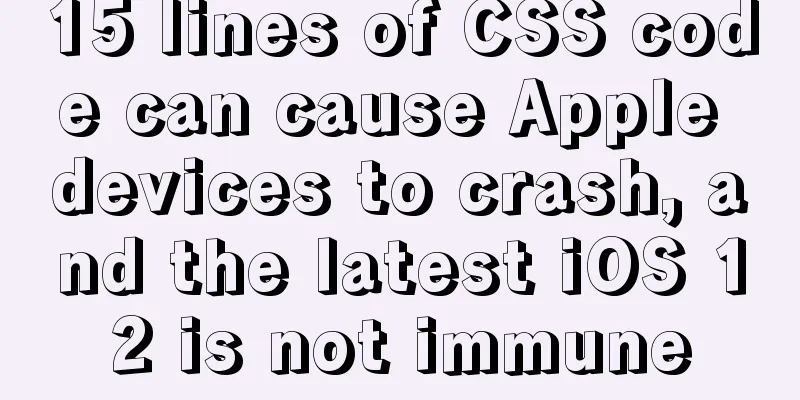JS realizes the case of eliminating stars

|
This article example shares the specific code of JS to eliminate stars for your reference. The specific content is as follows The effect of destroying stars:
Functional requirements: 1. Click on the star and it disappears. Case code and analysis:HTML and CSS code:
* {
margin: 0;
padding: 0;
box-sizing: border-box;
}
div {
position: relative;
width: 1000px;
height: 500px;
margin: 100px auto;
background-color: black;
}
</style>
<body>
<div>
</div>
JS code:
var div = document.querySelector('div');//Get the div box function creatImg(num) {
for (var i = 0; i < num; i++) { //Randomly generate num stars var imgs = document.createElement('img'); //Create img tag imgs.style.position = 'absolute'; //Add absolute positioning to the star image var width = Math.floor(Math.random() * (50 - 10 + 1) + 10);
var height = width; //Randomly generate width and height, the width and height of the stars are consistent var top = Math.floor(Math.random() * (450 - 0 + 1) + 0);
var left = Math.floor(Math.random() * (950 - 0 + 1) + 0);
//Change the width, height, left, and top values of the star to randomly generated imgs.style.width = width + 'px';
imgs.style.height = height + 'px';
imgs.style.left = left + 'px';
imgs.style.top = top + 'px';
//Add the link of the star image to the img tag imgs.src = 'images/xingxing.gif';
//Add the created img tag to the div box div.appendChild(imgs);
}
}Note: When modifying properties with units such as width and left, be sure to add the units.
creatImg(5); //Call the function and generate five stars setInterval(function () { //Execute the code every 1s var img = document.querySelectorAll('img'); //Get the star image //Add a click event to each star for (var i = 0; i < img.length; i++) {
img[i].addEventListener('click', function () {
//Delete the clicked img after clicking
div.removeChild(this);
})
}
creatImg(1);
}, 1000);When getting the picture, you get all the star pictures in the div box, not just a single one After the pictures are acquired, they exist in the form of a pseudo-array, so you can bind click events one by one by traversing them. JS knowledge points used in the case: (the ones with color are used in the case) Node OperationCreate Node document.createElement() Add Node node.appendCild(child) (append element) Delete Node node.removeChild(child) Delete a child node in the parent element Style attribute operationselement.style 1.element.style.backgroundColor = 'red'; element.className 1. Applicable to situations with many styles or complex functions Timerwindow.setTimeout(call function, [number of milliseconds to delay]); 1. We also call the calling function of setTimeout() as callback function window.setInterval (call function, [number of milliseconds to delay]); 1. We also call the calling function of setTimeout() as callback function The above is the full content of this article. I hope it will be helpful for everyone’s study. I also hope that everyone will support 123WORDPRESS.COM. You may also be interested in:
|
<<: Design Theory: Textual Expression and Usability
>>: Analysis of the difference between absolute path and relative path in HTML
Recommend
Teach you how to insert 1 million records into MySQL in 6 seconds
1. Idea It only took 6 seconds to insert 1,000,00...
Teach you how to deploy Vue project with Docker
1.Write in front: As a lightweight virtualization...
A brief summary of basic web page performance optimization rules
Some optimization rules for browser web pages Pag...
Linux Dig command usage
Dig Introduction: Dig is a tool that queries DNS ...
Detailed explanation of how to use Vue+element to implement the tag at the top of the page
Table of contents 1. Page Rendering 2. Switch tag...
Detailed explanation of efficient MySQL paging
Preface Usually, a "paging" strategy is...
Examples of common operations on MySQL foreign key constraints [view, add, modify, delete]
This article uses examples to describe common ope...
Detailed tutorial on building a local idea activation server
Preface The blogger uses the idea IDE. Because th...
Web interview: The difference between MVC and MVVM and why Vue does not fully comply with MVVM
Table of contents Difference between MVC and MVVM...
How to make a centos base image
Preface Now the operating system used by my compa...
MySQL triggers: creating multiple triggers operation example analysis
This article uses an example to describe the crea...
A summary of some of the places where I spent time on TypeScript
Record some of the places where you spent time on...
JS implements the curriculum timetable applet (imitating the super curriculum timetable) and adds a custom background function
Overview: I drew lessons from several timetable s...
DIV and image horizontal and vertical centering compatible with multiple browsers
The first type: full CSS control, layer floating ...
MySQL uses frm files and ibd files to restore table data
Table of contents Introduction to frm files and i...










